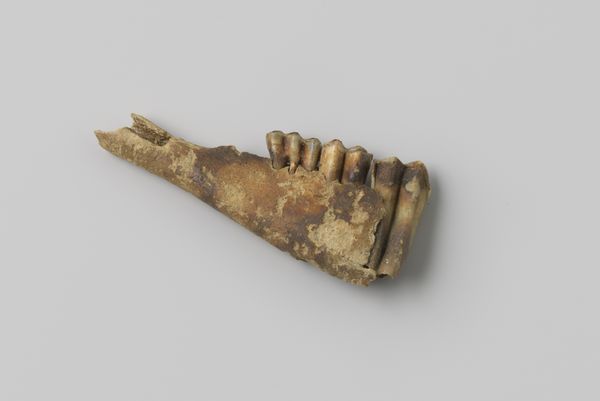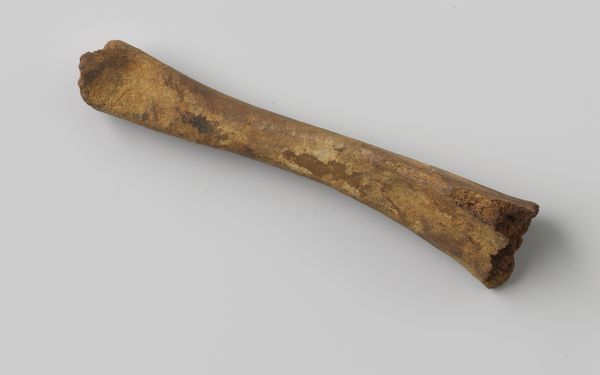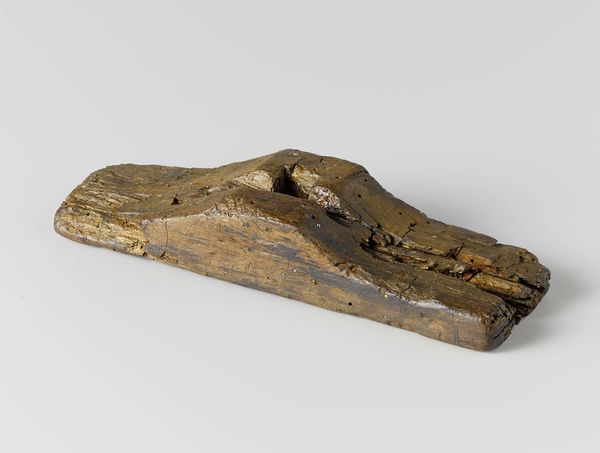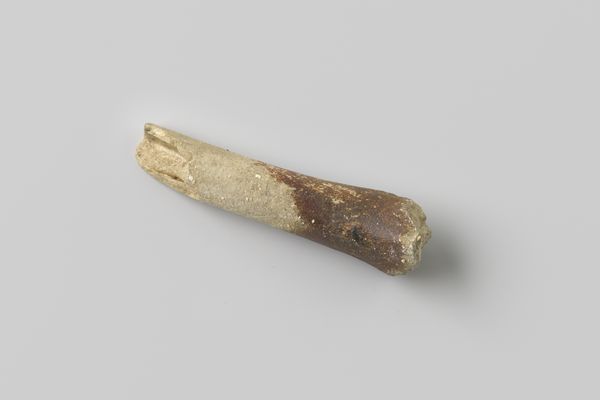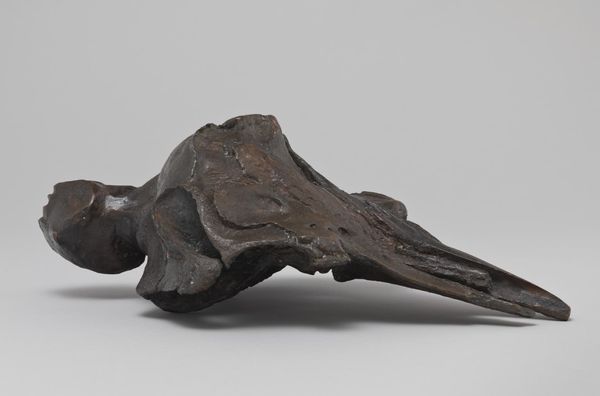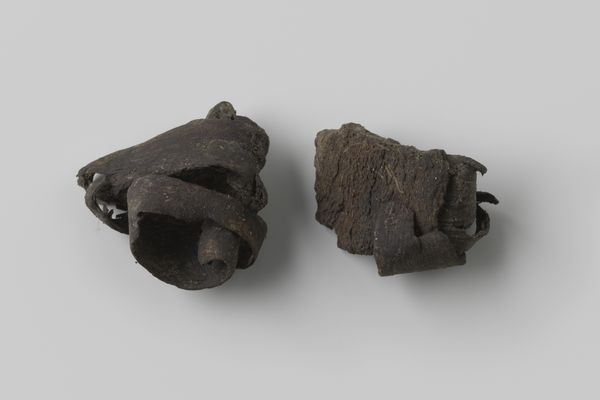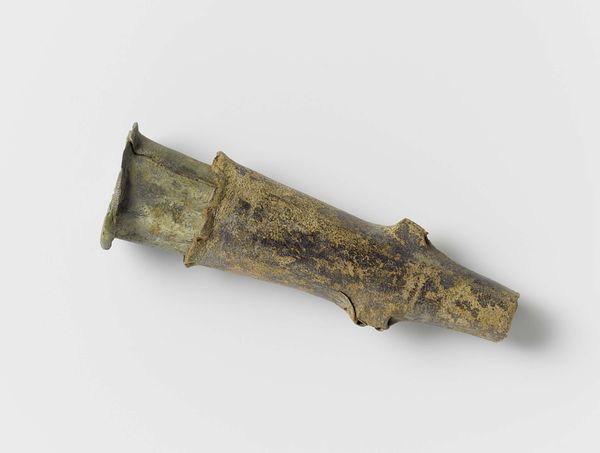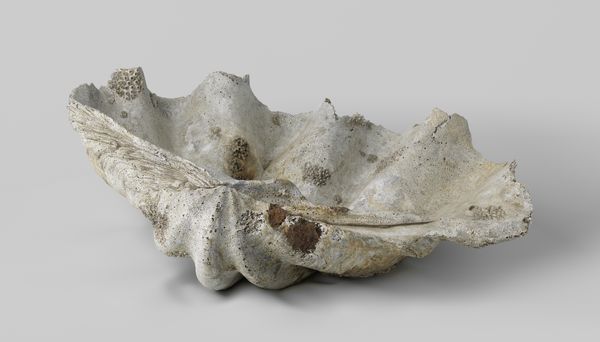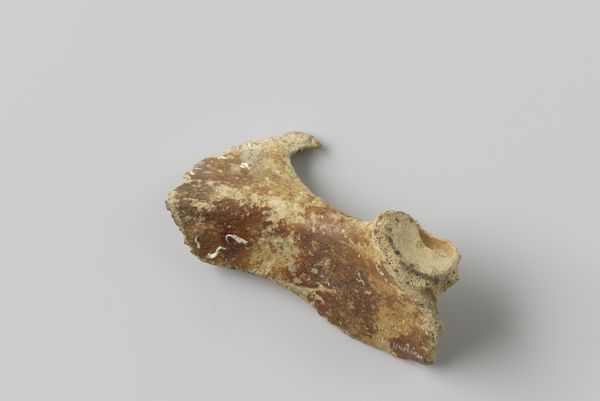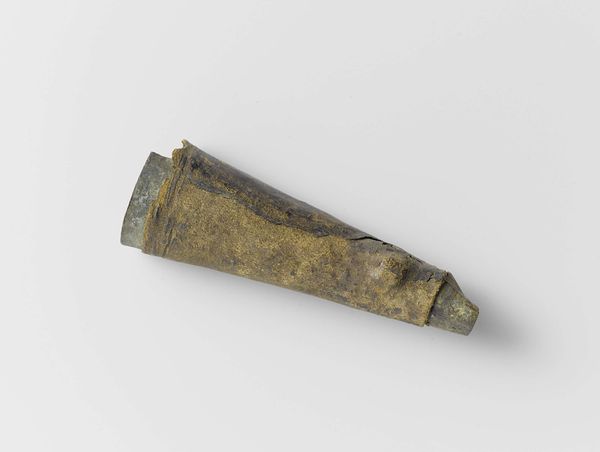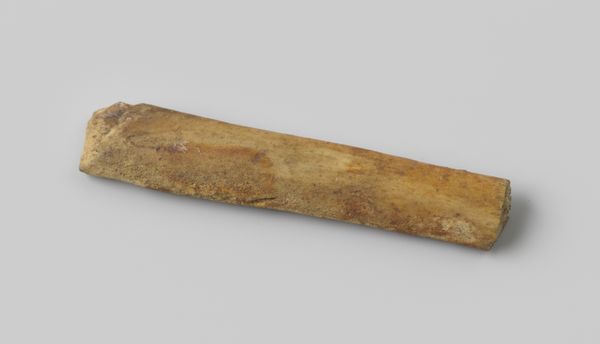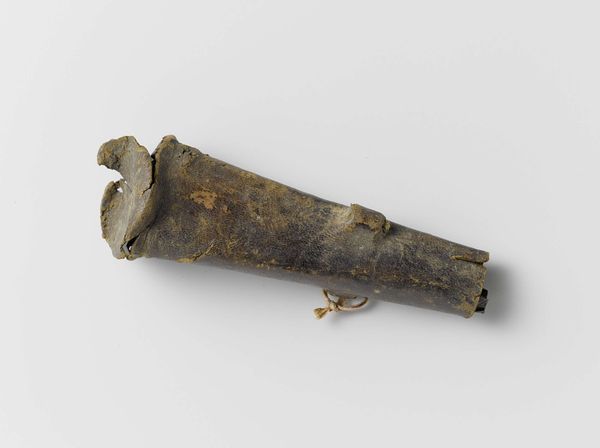
Fragmenten varkensbot uit het wrak van de Oost-Indiëvaarder Hollandia before 1748
0:00
0:00
found-object, sculpture
#
medieval
#
sculpture
#
found-object
#
sculpture
Dimensions: length 16.8 cm, width 5 cm, depth 3.2 cm, length 2.4 cm, width 1 cm, depth 0.7 cm
Copyright: Rijks Museum: Open Domain
Curator: What a stark composition. The sense of loss and fragmentation is immediate. Editor: Indeed. What we’re looking at are, in fact, "Fragmenten varkensbot uit het wrak van de Oost-Indiëvaarder Hollandia"— fragments of pig bone from the wreck of the East Indiaman Hollandia. This dates to before 1748, recovered presumably after the ship sank. It's currently held in the Rijksmuseum. Curator: Knowing that these are remains from a shipwreck elevates their symbolic weight. The bones aren't just organic material; they speak to themes of mortality, colonial trade, and maritime disaster. The bone itself, typically associated with sustenance and domestic life, is now evidence of hardship and oblivion. Editor: Absolutely. The East India Company ships like the Hollandia were pivotal in global trade networks. Yet, the human cost and the environmental impact of these voyages are often obscured. This humble fragment serves as a powerful reminder, a visceral connection to a specific historical tragedy. These voyages were very far away from their home countries; canibalism or using any organic material for food, including rodents or leather, to survive was often the difference from life and death. These pork remnants give us an unique insight into these situations. Curator: Thinking anthropologically, this bone reveals a glimpse into the daily life and provisioning practices aboard such a vessel. Beyond trade routes and cargo manifests, it forces us to contemplate the diets, labor, and the very material existence of the people involved. Eating pork regularly was probably restricted to ship command and officers, implying social hierarchy. Editor: It’s interesting to consider how this fragment transcends its original function. Rescued and displayed, it shifts from discarded waste to a relic. The museum context transforms it into a symbol of historical narrative and cultural memory. Do we romanticize such findings by isolating them in glass display cases? Curator: The museum inherently re-contextualizes the bone. It is charged with representing narratives of maritime history but there's also a very poignant reminder of what humans can endure in times of extreme situations. Editor: Agreed. Seeing this gives a moment of reflection. How these remains came about tell a complex story with the intersection of maritime commerce, colonialism and hardship. Curator: Precisely. These bones do serve to connect us to past times of hard trade, where there were often fatalities in a foreign sea.
Comments
No comments
Be the first to comment and join the conversation on the ultimate creative platform.

